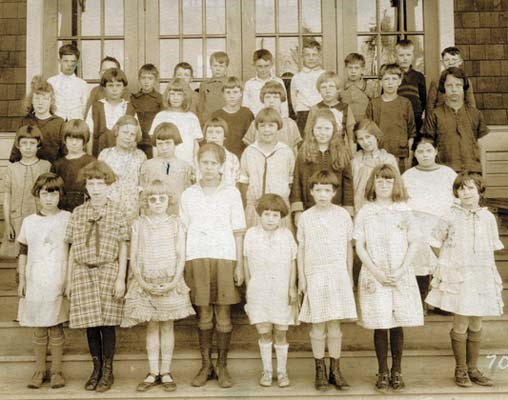This school year, Capitol Hill Elementary has 312 students - which is about how many people lived in all of Burnaby when the very first school was built in this city in 1894.
That first school, a one-room school house on the corner of 18th Avenue and Canada Way, opened with 30 pupils and one teacher; the city's population totaled about 300.
By 1916, the district had grown to a total of 16 schools. Then, during the "boom years" from 1920 to 1929, eight new schools - including the very first secondary schools - were opened.
One of them was Capitol Hill Elementary, in 1923, at the corner of Holdom and Hastings, where it still stands today. At that time, Hastings was still a dirt road bordered by trees and forests as it travelled from the farms of Burnaby toward the city of Vancouver.
According to school district communications manager Jodie Wilson, the district has grown a lot in the intervening years: there are now nearly 24,000 students across 49 schools.
And that growth reflects another big change in Burnaby over the years - ever increasing diversity. In 1923, most students in the district had been born here (though their parents may have come from the U.K. or Europe); today, a total of 75 different languages are spoken in the homes of students enrolled in the district.
At Capitol Hill, which will mark its 90th anniversary next year, about half the population of students have a home language other than English.
According to Principal Kelly Chow, those languages include a broad representation from across the globe: Mandarin, Persian, Kurdish, French, Swahili, Korean, Russian, Albanian, Tagalog, Italian, Hindi, Dutch, Romanian and more.
But if the diversity of the student population has blossomed over the years, so too has the learning environment.
Early schools in the district usually had one teacher covering multiple grades. Capitol Hill alone has about 39 full-and part-time staff members, of which about 22 are teachers.
And small hand-held slates have been traded in for more sophisticated tools over the years: first for pencil and paper and, more recently, for new technology being used in innovative ways.
Chow says a variety of equipment is now used in the school to help support student learning, including everything from SmartBoards to classroom computers, iPods and more.
But Capitol Hill won't soon forget its early pioneer days - the school is in the planning stages of creating a space on its website for historical information and photos to celebrate and preserve the school's unique place in the city's history.
DATELINE 1927
By 1924, the population in Burnaby had grown to 20,000. With the Great Depression (which would lead to unemployment rates as high as 27 per cent in Canada) still a few years off, the Roaring '20s was still a boom time for the city. In 1927, Canada celebrated its Diamond Jubilee, marking 60 years since Confederation. To get a taste of Burnaby during this time, head over to Burnaby Village Museum, which is modeled after life in this region during the 1920s.
www.twitter.com/ChristinaMyersA



